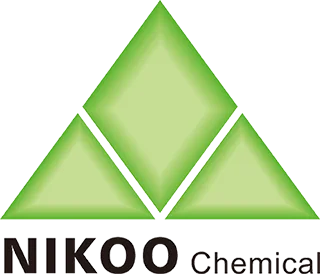The Science of Scent Throw: Maximizing Hot & Cold Performance
2025-06-17
Achieving a powerful and pleasant scent throw – both cold (unlit) and hot (burning) – is the ultimate goal, reliant on the intricate interplay between fragrance oil chemistry, wax properties, wick dynamics, and burning physics.
Factors Influencing Scent Release:
- Fragrance Oil Composition:
- Molecular Weight & Volatility: Lighter molecules (top notes) evaporate easily for cold throw but burn off quickly. Heavier molecules (base notes) require more heat for hot throw but last longer. A balanced FO has a spectrum.
- Flash Point: The temperature at which FO vapors can ignite. FOs with flash points significantly above the wax melt pool temp (usually 150-180°F) are safer and release scent via evaporation. FOs with flash points closer to the melt pool temp can release more intensely (but risk fire if misused).
- Solubility & Binding: How well the FO integrates with the specific wax molecules. Poor binding leads to separation, oil seepage ("sweating"), and weak/uneven throw.
- Wax Type & Properties:
- Crystallinity: Waxes with smaller, tighter crystals (e.g., some paraffins) can "trap" scent, potentially muting cold throw but offering strong hot throw as crystals melt. Looser crystals (e.g., softer soy) may offer better cold throw but require higher FO loads for equivalent hot throw.
- Melting Point: Affects the temperature of the melt pool, directly impacting which FO molecules vaporize.
- Additives: UV inhibitors, hardeners, or vybar can impact FO binding and scent release.
- Wick Function:
- Melt Pool Size & Temp: The correct wick creates a full melt pool reaching the edges of the vessel. An optimal pool temp ensures efficient FO vaporization. An undersized wick = small pool, weak hot throw. An oversized wick = too hot, can burn off scent or create soot.
- Capillary Action: Efficiently draws the FO-laden molten wax up the wick to where combustion occurs, releasing scent.
- Vessel & Environment: Container shape/material affects heat retention and distribution. Room size, airflow (drafts), and ambient temperature influence scent diffusion and perception.
Optimizing Performance:
- FO-Wax Compatibility Testing: Essential before large batches.
- Precise Load: Adhere to recommended % (usually 6-10%); exceeding can cause soot, poor burn, or scent overload.
- Thorough Mixing: Ensure FO is fully emulsified into wax at the correct temperature (typically 10-15°F above wax melt point).
- Proper Curing: Allows FO to fully bind with wax molecules, significantly improving hot throw over time (1-2 weeks common).
- Correct Wick Selection: Crucial for achieving the optimal melt pool temperature and size.
Understanding this science empowers makers to troubleshoot weak throw, prevent issues, and consistently achieve candles that deliver their aromatic promise.
ReviewsNumber of comments: {{ page.total }}
I want to comment?
{{item.nickname ? (item.nickname.slice(0, 2) + '*****') : item.source === 1 ? 'mall buyer' : '--'}}
{{item.comment_time}}
Review in the {{item.country}}
Reviews
Merchant
{{replyItem.nickname ? (replyItem.nickname.slice(0, 2) + '*****') : replyItem.source === 1 ? 'mall buyer' : '--'}}
{{replyItem.parent_nickname ? (replyItem.parent_nickname.slice(0, 2) + '*****') : '--'}}
{{replyItem.is_merchant_reply === 1 ? replyItem.reply_time : replyItem.comment_time}}
Review in the {{replyItem.country}}
Reviews

No customer reviews
recommended for you
no data
Get in touch with us
Contact Us
Phone: +86 20 36028881
Fax: +86 20 36550567
Email:rebecca@nikoochem.com
WhatsApp: +86 13822397763
Add: No 1718, Airport Rd., Yuncheng St., Baiyun Dist., Guangzhou City, Guangdong, China 510000
Contact us
Leave your inquiry, we will provide you with quality products and services!
Contact us
phone
email
wechat
skype
whatsapp
messenger
Contact customer service
Contact us
phone
email
wechat
skype
whatsapp
messenger
cancel
Customer service
